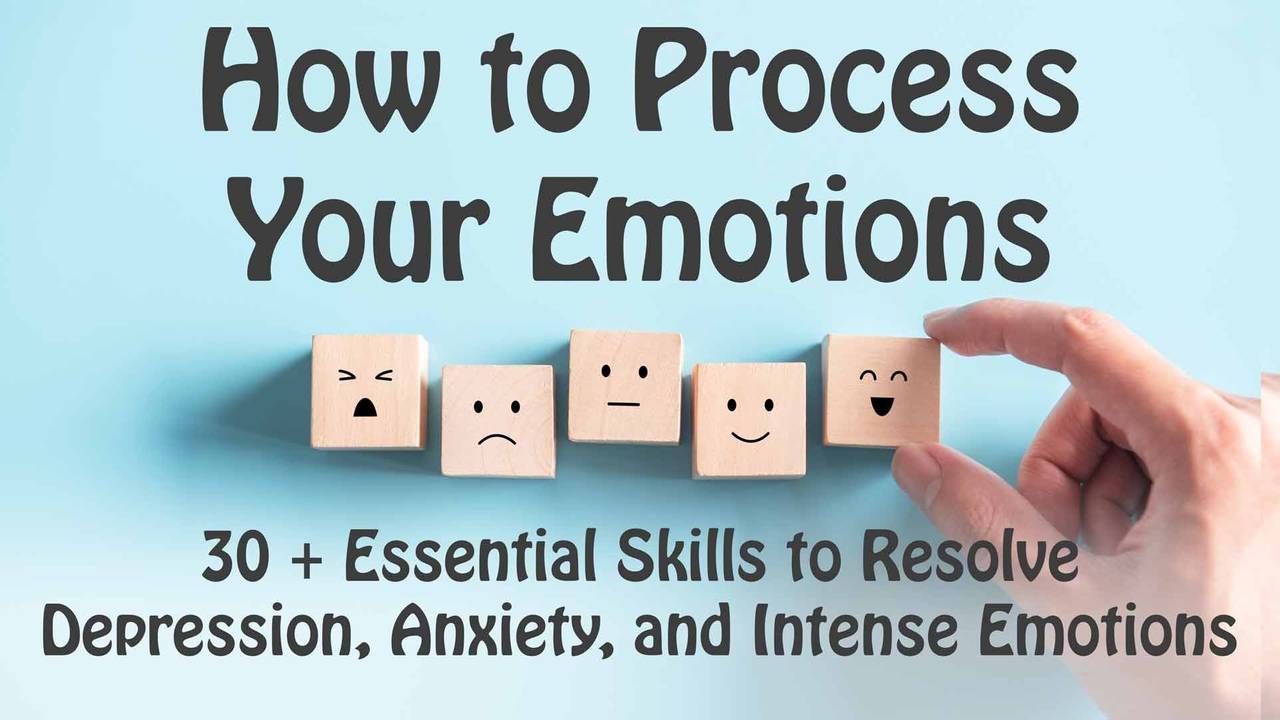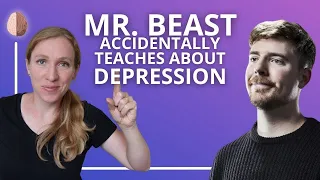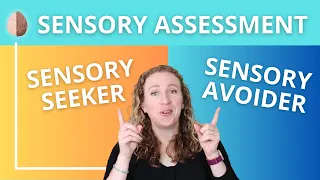Emotions Serve Important Functions
Emotions aren’t just “bad things that happen to us” they serve at least three important functions in our lives-and if we want to learn to process through them and resolve them, we have to honor the function of core emotions.
The Gift of Pain
Have you ever heard about the children born without pain receptors? It’s an incredibly rare congenital condition, it only affects around 100 people in the whole world and on the surface it sounds amazing- how would it be to never feel physical pain- cool right? Well actually, it’s a nightmare- these little kids who can’t feel pain, also have nothing to protect them from injury. When Isaac was a toddler he would throw a tantrum and smack his face hard into the ground and just laugh because he thought it was funny. He would chew on his tongue until it bled. He would poke his fingers into his eyes, because they felt weird but he was actually damaging his eyeballs. Normally your pain receptors would send a strong message- Stop biting your tongue! Stop poking your eyes! Stop hitting your head! But for him, no pain meant there was little to stop him from harming himself.
Ashlyn is another girl who feels no pain, as a baby she never cried when she was hungry or when she had a diaper rash- this seems like the ideal baby right? But then one day, they had her in to the doctor for a regular checkup and found out that she had a huge corneal tear on her eye-normally this would be incredibly painful. Because she didn’t feel pain she wasn’t able to alert her parents to her injuries or her needs. Ashlyn and kids like her live in danger every day because they don’t have the automatic protective alarm system of pain. Ashlyn has walked for two days on a broken ankle without realizing it, she’s sat in a pile of fire ants without being bothered by their blistering bites, kids like her stick their hands on hot stove burners or into boiling water without shedding a tear. And their lack of pain creates a real difficulty for their parents who are trying to keep them safe without the kids’ internal systems to help them. Ashlyn is now 13 and learning to cook, take care of herself, and they worry every day that she’ll get hurt without realizing it. Ashlyn’s parents have created a facebook group for other families with this condition called “The Gift of Pain” and it’s not until you see what life is like without any pain at all, that you can appreciate the benefit of pain in your life.
While this may seem like an extreme example, I hope it helps you break down this idea of “Positive and Negative” Emotions even more. Pain is uncomfortable- but it serves a purpose.
In this section, skill #2, we’re going to talk about how every emotion you experience serves a function- in their purest form, emotions like fear, sadness, joy, love, guilt, hurt, all serve important roles in our lives. You’re going to learn how to get better at feeling by listening to your innate wisdom, and you’re going to learn why coping skills don’t work in the long run.- And what to do instead.
You already have within you the inherent ability to resolve and manage your emotions, you have a deep knowledge inside of you that will guide you and help you work through thoughts and emotions with strength and integrity. The problem is that many of us have been taught that there are “good emotions” and “Bad emotions” and that gets in the way of us being able to listen to our emotions, and honor them.
When we focus our energy on making “bad” feelings go away, we often lose track of who we want to be. When we choose to see emotions as functional, instead of just uncomfortable inconveniences, we use our emotions as a resource instead of seeing them as an obstacle.
So let’s talk about one example of how a so-called negative emotion- can actually be really helpful. If I hurt someone, let’s say I punch them in the face for no good reason. I’m going to feel regret, I’m going to feel some guilt. Guilt is uncomfortable. Does that make it a negative emotion? Our cultural approach to “feeling good” says we should try to make the guilt go away. But in this case, the guilt is actually helpful. I did something wrong. I should feel guilty. Now If I listen to that guilt, it should help motivate me to change my actions, to not do that again, to apologize and make repairs-to pay their doctor bills or whatever. Every emotion, when it’s pure, can serve a function. And when we clean up our emotions, they can guide us to a life of integrity and happiness. Now in this course we’re going to learn a lot of ways to clean up distorted emotions- but to do that, we first have to understand the function of emotions. So let’s talk about that.
Exploring the Function of Emotions
The function of Guilt is to ask-”Did I do something Wrong?” If yes- Fix it, Make repairs
If No- Let it go.
The Emotion of Fear or Anxiety-This emotion asks “Am I in danger?” It says “Look Out!” it asks “Is this actually dangerous?”. I want my daughters to feel some anxiety. I want them to feel anxious on a cliff edge- so they don’t go close, or to worry a little about cars so they don’t run into the street. So when you feel anxious ask: “Is this actually dangerous? If yes- Take action to create safety(Fight, flight, Freeze),If not, this is imagined danger, we need to manage our response (calm the body, calm the mind). And whether something is dangerous or safe, we need to check our values to see what is most important to us. Do we need to face our fears to live the life we want? Or is it better to be extra safe in some situations.
Excitement (aka stress prepares us to perform.
Love motivates us to sacrifice for something we care about.
Even hopelessness can serve a function- it asks “Should I keep trying?” You can’t build a bridge across a river with Ritz crackers! You should feel hopeless after trying this a number of times, hopelessness will motivate you to stop wasting that effort and try something else. So instead try using steel beams, trees, rocks, whatever.
False hopelessness is giving up when it is still possible. This is usually what we see with a depressive disorder, you feel hopeless about life or yourself when the truth is, your life could be really good.
Emotions Serve At least 3 Important Functions
Warning signs to help us notice problems
Motivation to change
Help us connect us to other human beings
Alternatives to Coping Skills
This is why a focus on coping skills doesn’t work in the long run. Here’s another example: Let’s assume that you feel very angry because your child has been given an unfair grade at school. You are friends with other moms of kids in the same class and when you compare the assignments and grades, it’s clear that the teacher gave him an F, and others A’s when the level of work was the same. This low grade might affect his ability to go to college and that’s really important to you.
If you search-”How to deal with anger” everything you read will say that if you’re angry you should either (1) express it, you know, vent or (2) cope (go for a run, punch a pillow, listen to some calming music, distract yourself, etc). If this is your approach, (especially if this is your only approach) then the problem never gets solved. Coping skills just bury the problem, only to resurface later.
In this case we can explore some constructive alternatives. If we pause and look at the anger, where is it coming from? Anger is often about fairness and protection. If we listen to what the emotion is telling us then some options open up.
With Anger, we always need to check to see if it’s a secondary emotion, that means an emotion covering up another, more tender, emotion. We’re going to learn so much more about this in Skill #7. But basically, before we try to solve the problem- just check to see if the anger you’re feeling isn’t really fear, or guilt, or disappointment. Those emotions beg for a different solution.
Perhaps the solution is righting the wrong, making sure that you stand up for your child who is being mistreated or confront the teacher.
Maybe the right thing to do is to help your child find safety by changing classes or schools.
Or you could encourage your child to help him feel confident enough to be assertive with his teacher, to talk about the issue.
Maybe the solution is actually that you need to change your perspective, looking at the problem anew, or even seeing what you thought to be mistreatment to be actually fair or helpful treatment when viewed honestly. You might call or email the teacher, politely asking for clarification and find out that the teacher caught your son cheating. This new perspective gives you lots of new options for action to solve the problem that have nothing to do with the teacher. (This solution is frequently needed, the most helpful, and the most difficult to do on our own)
In some rare circumstances, the problem is completely out of our control and/or the best thing we can do is to open up some space to feel and let the emotion pass through us without taking action. We can help our child understand that the world isn’t fair, but that we can try to live that value of fairness, to “be the change we wish to see in the world” Or go to school board meetings to try to influence the big picture problem of teacher training.
If we really look carefully at the root of the anger emotion, then it gives us so many options for action on the problem, instead of on the emotions itself. When we pause to explore the emotion, we suddenly have so many more available responses instead of just react or suppress. Pausing is a really important step-and we’re going to practice that throughout the course.
What if I can’t take action? The Serenity to Accept
Now what, you may ask, am I supposed to do if I can’t solve the problem? What if it’s out of my realm of control? If it’s just someone else’s choices that make me hurt. Can I cope then? Well, I would say that coping implies active suffering combined with trying not to think about it. Suppression usually leads to explosions later. I would encourage finding active peace combined with a focus on living the life you value. Using your willingness skills to make space for the pain will enable you to not have to struggle against it.
Coping Skills vs. Resolving Skills
Your emotions aren’t out to get you. There’s a very high chance that your mind is not broken or defective. When we think of emotions as good or bad, we tend to try to create change at the emotional level. When we try to just stop an emotion, it’s like trying to get rid of an iceberg by cutting off the top, all the ice underneath just keeps surfacing.
If we see emotions and behaviors as functional, we create change at a deeper level. We tend to resolve problems because we see the emotion as simply an indication that there’s something we need to change.
Both approaches to emotional change take work, and both are uncomfortable. The difference is that Coping creates a cycle that is not sustainable, it is usually built on short-term fixes. It relies on things that make us feel better now, but in the long run need to keep being fed. This keeps all our energy focused on emotional control and we are completely distracted from the direction we want to go with our life. Resolving Emotions focuses on acknowledging problems as a step on the road to solving them. It creates sustainable change that leads to more and more fulfillment as time goes on.
Three reasons why you don't know why you're feeling an emotion:
- You’ve been doing what you’re doing for so long that you’ve got a serious backlog of fish trucks, and there’s so much history there that it’s hard to even tell them apart. This is common with depression, generalized anxiety, and repressed trauma. The solution- just get started shoveling. Start processing emotions one at a time and it will make a big difference. The first way to practice this is through the emotion tracker. (See Skill 25-One Step at a Time)
- You might be having a pure emotion that comes from being human, it’s not a sign that something is wrong. A beautiful aspect of being alive is laughing so hard that milk comes out our nose and sobbing when we lose someone. Solution- Don’t try to make these emotions go away, they are a beautiful part of being alive. Increase your willingness skills and emotions will no longer feel disabling.
- Your emotion might be a secondary emotion (see Skill 7)- Solution- explore the emotions and see if what else is there, perhaps deeper. The closer we get to the core emotions, the more sensitive they are, but the greater power we have to take action.
What About Disorders?
Now you may be wondering, how does this apply to Depression or Anxiety Disorders. I am not trying to say that a depressive disorder or an anxiety disorder is functional, but I will say that often, the primary, core root emotions of sadness or fear can be very functional, when we learn to use them the right way. But there’s a lot that we do that can exaggerate, distort or feed those emotions that leads to us drowning in them. I consider these emotions Created Emotions, or distorted emotions, or as we talk about in Skill #8- “Dirty Pain” pain that we create by something we’re doing. Vs. Pain that we experience in its pure form as a part of living and loving. In this course we’re going to go into a lot more detail about how you can clean that pain up and resolve many of those distorted emotions. But we can’t do any of that if we don’t understand the function, the purpose of the root emotions.
On a side note, some people are just born more or less emotionally sensitive. Some people are more prone to be anxious and others less anxious. I also think this serves an important function in the community. If we have 100 people in our village and 10 are extra anxious and 10 are extra-un-anxious, they’re rarely worried or bothered. The 10 extra anxious people may be more likely to raise a warning when something’s about to go wrong, or they’ll keep a closer eye on the children to keep them from falling off a cliff. And the 10-un-anxious people probably would make good warriors or hunters, but they maybe would have a harder time getting along with people (people who have extremely low or no anxiety, tend to not worry about how they impact the people around them and can end up as sociopaths). As a community we can value these differences and find good roles for them, instead of labeling some as good and some as bad.
It is fair to say that some emotions are comfortable and some are uncomfortable to have, and in that sense some are easier to experience and others more challenging. But ask yourself-has trying to get rid of uncomfortable emotions made your life better? Emotions are not bad, they are functional. When we stop getting in the way of their inherent purpose and flow with them we are able to live better lives of meaning and integrity. And, as an added bonus, we are often able to resolve them.
Explore one of the recent intense emotions you had. What purpose could it have? What was it trying to accomplish or show you? What kind of action did it seem to be asking for?
References
https://www.nytimes.com/2012/11/18/magazine/ashlyn-blocker-feels-no-pain.
htmlhttps://www.youtube.com/watch?v=AqRcngt0-h0
https://abcnews.go.com/Health/meet-toddler-feels-pain/story?id=20658484
This is one skill in a 30 skill course, How to Process Emotions. You can access the full course with added bonuses below.





